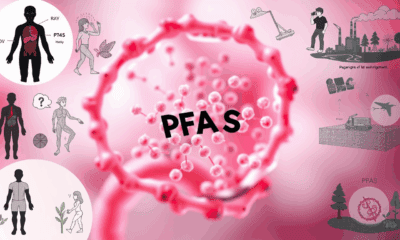While we try to keep things accurate, this content is part of an ongoing experiment and may not always be reliable.
Please double-check important details — we’re not responsible for how the information is used.
Bone and Spine
Heart Health Disparities: Why Lifestyle Risks Weigh Heavier on Women’s Hearts
Lifestyle and health factors that are linked with heart disease appear to have a greater impact on cardiovascular risk in women than men.

Bone and Spine
Unlocking New Insights into Bone Marrow: Scientists Develop Revolutionary Imaging Technique
A new bone marrow imaging technique could change treatment for cancer, autoimmune disease and musculoskeletal disorders.
Bone and Spine
The Hidden Cost of High-Support Bras: How Excessive Bounce Reduction May Affect Spinal Health
Researchers uncover how over-reducing breast motion in bras could increase back pain during exercise.
Alzheimer's Research
Titanium Particles Common Around Dental Implants: New Study Reveals 14 Genes Affected
Titanium micro-particles in the oral mucosa around dental implants are common. This is shown in a new study which also identified 14 genes that may be affected by these particles.
-

 Detectors3 months ago
Detectors3 months agoA New Horizon for Vision: How Gold Nanoparticles May Restore People’s Sight
-

 Earth & Climate4 months ago
Earth & Climate4 months agoRetiring Abroad Can Be Lonely Business
-

 Cancer3 months ago
Cancer3 months agoRevolutionizing Quantum Communication: Direct Connections Between Multiple Processors
-

 Agriculture and Food4 months ago
Agriculture and Food4 months ago“A Sustainable Solution: Researchers Create Hybrid Cheese with 25% Pea Protein”
-

 Diseases and Conditions4 months ago
Diseases and Conditions4 months agoReducing Falls Among Elderly Women with Polypharmacy through Exercise Intervention
-

 Chemistry3 months ago
Chemistry3 months ago“Unveiling Hidden Patterns: A New Twist on Interference Phenomena”
-

 Albert Einstein4 months ago
Albert Einstein4 months agoHarnessing Water Waves: A Breakthrough in Controlling Floating Objects
-

 Earth & Climate3 months ago
Earth & Climate3 months agoHousehold Electricity Three Times More Expensive Than Upcoming ‘Eco-Friendly’ Aviation E-Fuels, Study Reveals





























